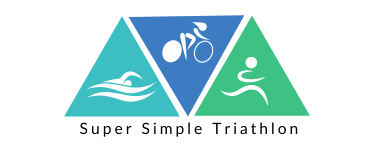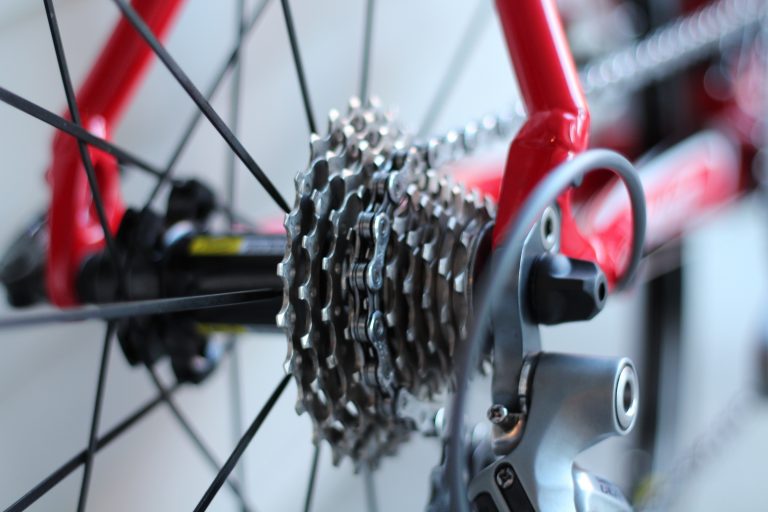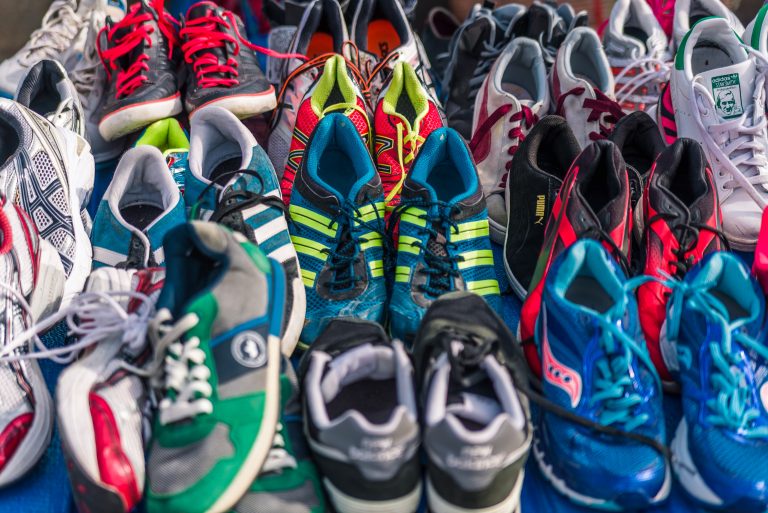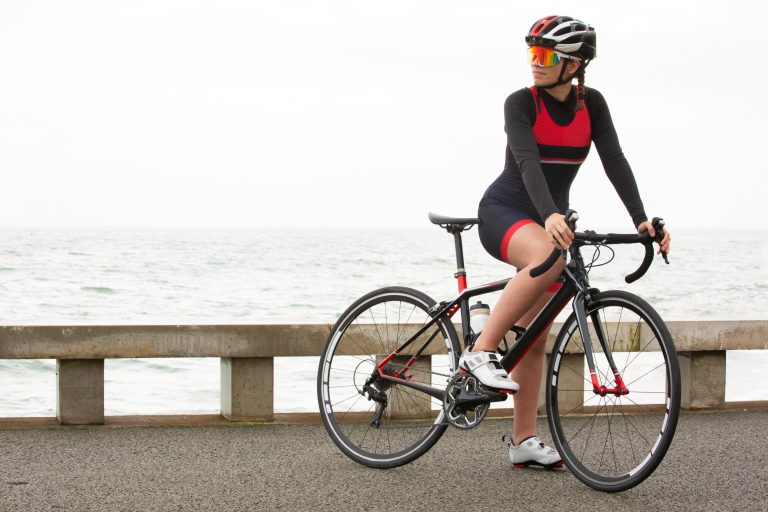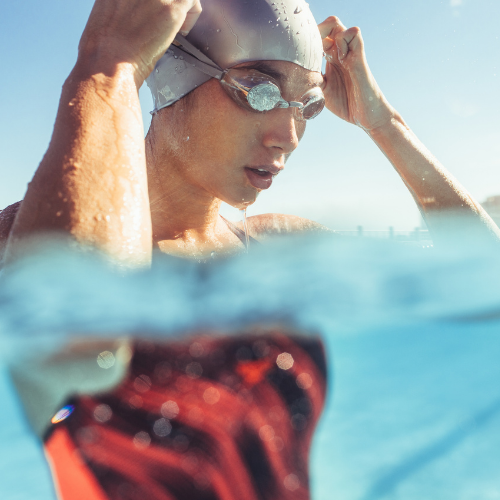Getting Started Guide to Triathlon Cost & Equipment
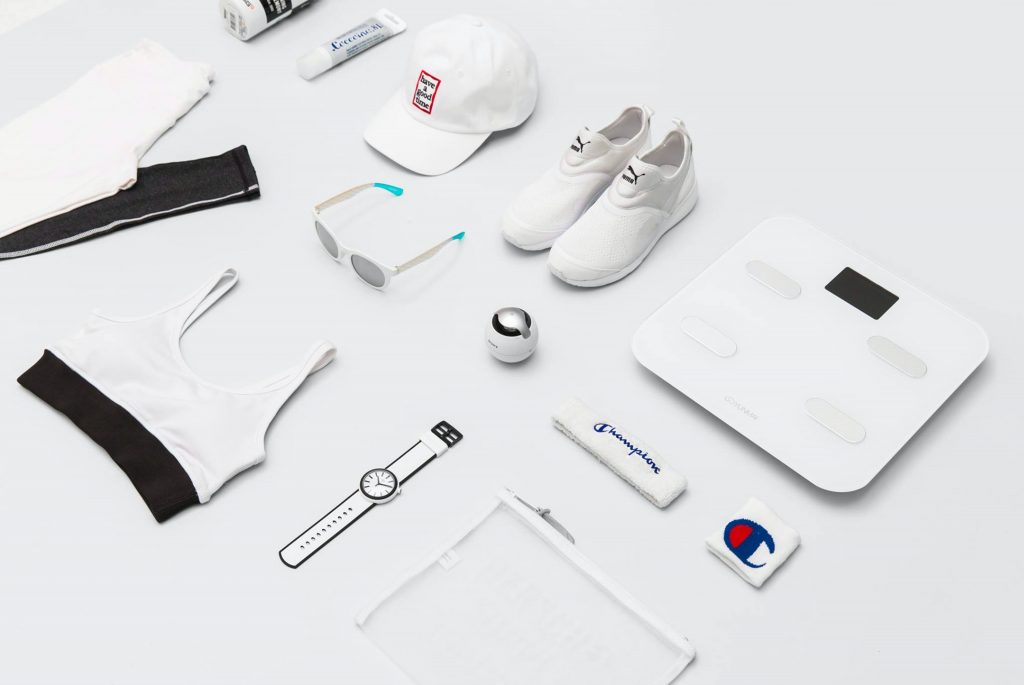
Get the inside details of the cost of triathlon equipment for training and racing
When we were kids, we did triathlons all day every day during the summer and never thought twice about it. The lake, pond or pool was close, our bike was a Christmas present from grandma and grandpa, and we rode it EVERYWHERE; and running was a way of life.
You can train and do a triathlon using borrowed and/or used equipment. There’s no need to overthink or break the bank. You might need to rent or borrow a wetsuit for the open water swim portion of your race if you are swimming in a lake. You could ask your neighbor to borrow her bike.
When I did my first triathlon, my bike was a hybrid model – made for trails and the road. It got the job done.
I once raced in a 70.3 distance with a guy riding a mountain bike! He did mention it wasn’t his best idea. But he got it done and he finished.
It is important to remember, no trendy gadget is going to make you faster. Hard work and training make you stronger and faster.
Download our Training Day Checklist here. Below are some considerations on cost when getting started in triathlon.
Equipment
Wetsuit – Depending on if your race is a pool swim or a warm day open water swim will determine if you really need a wetsuit. A wetsuit may be needed for open water swims when the water is below 74 degrees. Borrowing one is your best bet. But you can find used wetsuits on Ebay, CraigsList, of Facebook Marketplace. You might also check a local retailer for rentals or clearance suits. Dive shops may also be able to help you find what you need. Rent or Buy Used between $50-$200. A new one may run between $200-$800. Make sure to try it on to make sure it fits and doesn’t chafe or feel too tight.
Goggles – It is a best practice to get two (new) pairs. One with a clear lens, and another with a smoky or dark lens. Wear the clear in the pool, and the dark for open water. The darker lenses are perfect for sunny mornings and glare. Over time you will need to replace them, as the suction will eventually give, and they will leak. Thus, another reason to have a spare. $12-$50 each.

Swim cap – You will be required to wear a swim cap in a race, so practice with one. Many races provide them as part of your race entry. New cap: $3-$25.
Bike – This is most likely going to be your biggest purchase if you do decide to buy. Again, try Ebay, Craigslist, or Facebook Marketplace. Ask around. Sometimes you can find something just through word of mouth. Used $100-$500.
Purchasing new could cost anywhere between $500 to $10,000. As I mentioned before, my first bike was a hybrid. After a couple of races, I knew I wanted to keep racing, so I opted for a new bike. It was less than $3000, and I have trained and raced on it for TEN years. No need to get caught up in the difference between a road bike and a tri-bike now. Just use something that is safe and comfortable for you. You may also consider getting a professional bike fit. $300. Have water bottle cages installed so you have hydration at the ready when training and racing. $6-$25.
Bike helmet – This item is mandatory for racing. It can save your life in training too. I honestly have wrecked more than I care to count, and several times, my helmet has saved my life. New $40 – $300.
Bike shoes – Depending on your bike, you may need bike shoes, cleats, and pedals. Also known as “clipless” pedals. The shoe has a stiffer sole, and helps stabilize the foot for power, efficiency, speed, and comfort. These take some practice getting used to. Shoes: $60-$500. Cleats: $40-$800. Pedals: $40-$400. Instead of the “clipless” style, your bike may have toe/shoe cages to keep your foot from sliding off the pedal. For this option, you will usually wear your running shoes. $25-$250.
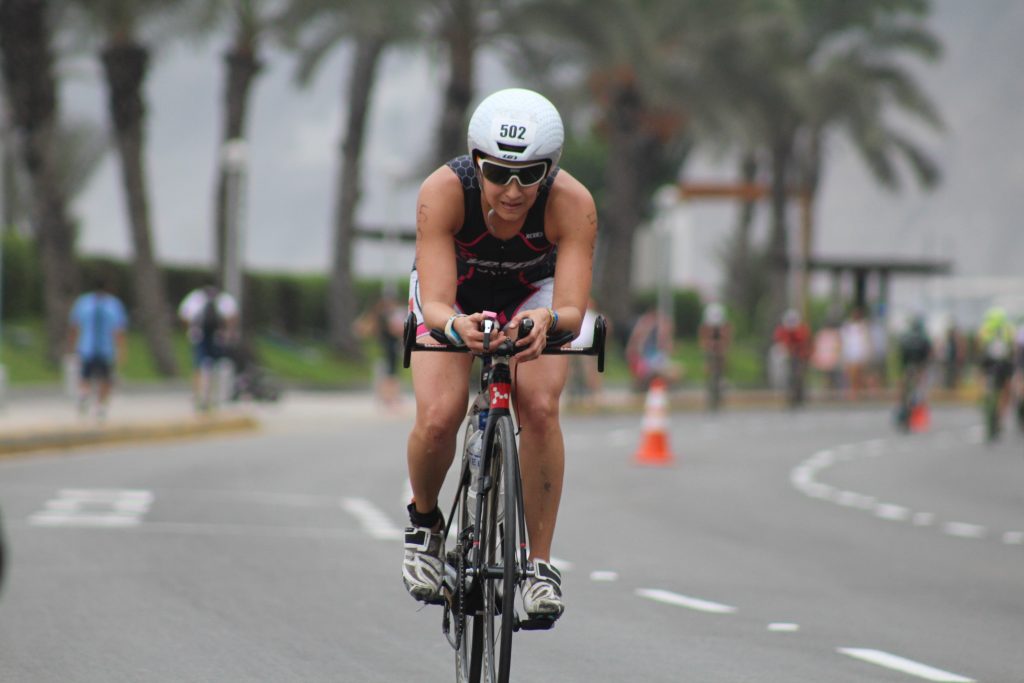
Bike repair kit – Be sure to have extra tubes, tire wrench, a patch kit, and a mini pump or CO2 cartridge on hand just in case you get a flat tire. $15 and higher.
Running shoes – Your feet are important, so your shoes are really important. They are an integral part of your experience. You will be putting a lot of miles on your feet, so you will want a shoe that is perfect for your foot and gait.
Find a running store that offers gait analysis. This assessment will help determine the right shoe for your foot for your running form. Most stores offer this for free or at a very low cost. Having the right shoe has the potential to keep injuries away and keep you comfortable while you are killing your goals. You won’t want to skimp on this. Running shoes typically last a little over 500 miles before they begin to wear out. $125 and higher.
Bonus tip: Buy two pairs if you love them. Shoe companies are constantly changing something about their shoe every year.
Timing device – There are many options for you here. You may decide to use an app on your phone for bike or running. Using your phone is the less expensive way, but you may need to purchase a carrying case or pouch. Expect to pay between $10-$20.
Most pools have a timing clock. If you need a lap counter, you can find them on Amazon for about $35.
You may decide to purchase a smart watch or other type of GPS watch. Expect to spend between $200-$800. We recommend Garmin.
Hat and sunglasses – Although these are personal preferences, they are nice to have on hot, sunny days. You don’t need to spend a ton of money on these items. You probably already have them laying around your house. Check your closet. $10 and up.
Gym or training facility – You will need a place to swim or work out on rainy, snowy, frigid cold or super-hot days. Think about your needs and what is available in your area. Look for a place that has a pool. You can do drop ins at a local pool if you prefer not to get a gym membership. Having everything in one place makes your training much easier to access when the weather suddenly changes. $25-150 month
Entry Fees & Costs – The cost of a race varies from venue to venue. Sprint distance races can be as low as $25 with a discount code. But I have seen them as high as $125. If the race has a relay, the fees usually are per athlete.
Many events will post early registration fees that are lower for the first few weeks or months and increase as the race day draws near.
Olympic distance races are around $75 and higher, while 70.3 races range from $275 and higher depending on when you register. 140.6 events are typically in the $700-$850 range.
It is important to remember the fees associated with races are for various race costs. Monies are budgeted for police, road closures (city and county permits), timing/tracking device company, promotions, truck rentals to move supplies, food, and so much more. There is quite a bit of logistics behind the scenes that make race day happen.
Complete Overview of Costs
Now, let’s break out the potential costs to get a better picture for yourself.
| ITEM | LOW | MIDDLE | HIGH |
|---|---|---|---|
| Wetsuit | Borrowed | $50-200 | $300-800 |
| Goggles | Borrowed – $15 | $25 | $50 |
| Swim Cap | Borrowed – $3 | $8 | $25 |
| Bike | Borrowed | $100-500 | $500-10,000 |
| Bike Shoes | Borrowed | $50-100 | $300 |
| Bike Helmet | Borrowed | $40 | $300 |
| Bike Repair Kit | Borrowed | $15 | $40 |
| Running Shoes | $125 | $150 | $300 |
| Timing Device | $10 | $35 | $200-800 |
| Hat | Free | $8 | $20 |
| Sunglasses | $5 | $50 | $500 |
| Gym Membership (6 mo.) | $150 | $150 | $150 |
| Potential Costs | $308 | $681 – 1,281 | $2685 – 13,285 |
Triathlon doesn’t have to be expensive to start. Use what you have or what you can borrow. Over time, if you feel you will continue the sport, you may decide to slowly add equipment.
Finally! Answers to the questions, “What do you want for your birthday” and “What do you want for Christmas”? are answered to build your triathlon equipment trove.
